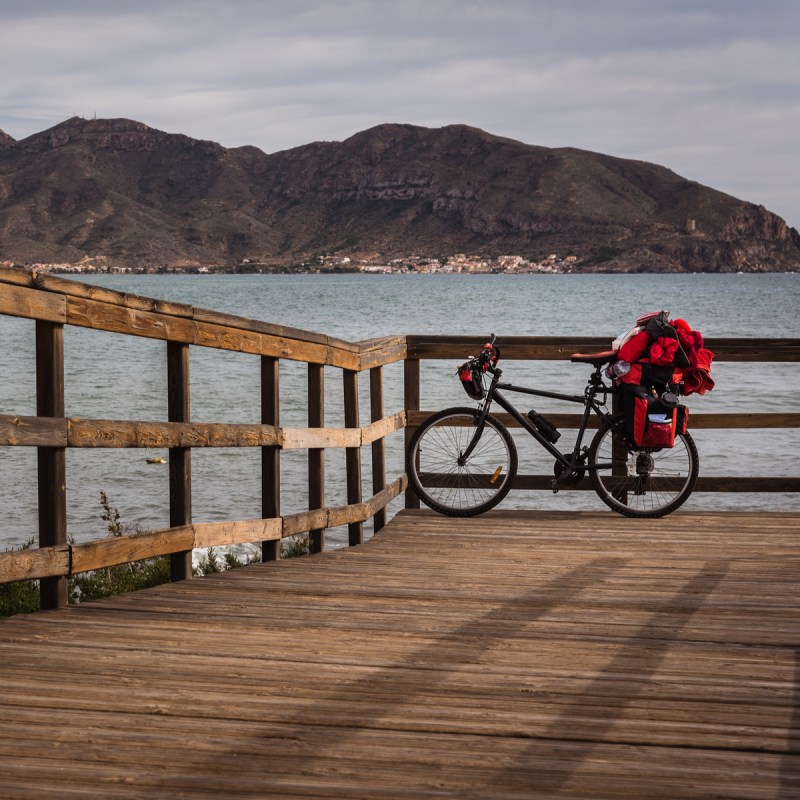
Costa Cálida means “warm coast” and refers to an approximately 155-mile-long stretch of coastline in the southeast of Spain. It reaches from the provinces of Alicante in the north to Almeria in the south with Murcia and Cartagena as the most important cities in between.
Videos by TravelAwaits
The coastline is characterized by splendid, sandy beaches as well as rocky coves. With more than 320 days of sunshine per year, it’s no surprise why this part of Spain got its sunny name. But it’s not only the warm weather that makes it an ideal destination to visit in the fall, it’s the warm water temperatures, too, caused by the protective Gulf of Mazarrón. And “warm” applies to the friendly and welcoming locals, too. Each and every type of watersport can be practiced here well into the winter months. Golf fans, pay attention! La Manga Golf Resort is one of the best in Spain, featuring three 18 hole courses.
In the fall, when the summer tourist crowds, local and foreign, have gone home, it’s the best time to visit the plethora of historic monuments you find on the Costa Cálida. Spain loves a good festival and some take place in Murcia province in the fall. With the summer heat over (it was particularly hot this year), one likes to enjoy a good meal again and there is no shortage of specialties on Costa Cálida, like rice dishes and suckling pig. Never fear, vegetarians and vegans won’t starve either.
The nearest international airport for any location on the Costa Cálida is Murcia. From there, you can either hire a car or travel by several bus lines to where you want to go.

The Weather
We can’t say it often enough: one of the main reasons why Costa Cálida is an ideal destination to visit in the fall is the fine weather. Stifling summer heat over, the average temperatures in the fall are in the 70s, warm enough for swimming and beach life and not too hot for trips into the surrounding countryside and nature parks, or to explore the beautiful, historical cities of Murcia and Cartagena. Rainfall is scarce but there can be the occasional (or sometimes strong) shower in October/November. The Spanish summer holidays are over, so there are fewer crowds to deal with and prices start to lower, too.
The Beaches
From wild to family-friendly, you’ll find a beach for every taste on the Costa Cálida. First a word about Mar Menor: it’s Europe’s largest coastal saltwater lagoon, located southeast of Murcia and not far from Cartagena. It’s separated from the Mediterranean by a strip of land, called La Manga (the sleeve). Some of the best beaches are to be found there, so Mar Menor needs to be mentioned here. Don’t be put off by reports of dead fish that have recently been washed up at Mar Menor. By the time you may visit, it should all be cleaned up. If you are still concerned, just go somewhere else, since the coast is very long and there are enough choices.
If you fancy a wild beach, visit Playa de Calblanque. Located within the nature park of the same name, this long stretch of ochre sand and rocky coves is great to look at and you can even take a dip in the blue water of the Mediterranean. Bring a picnic, towels, and everything else because this seldom-visited beach offers no amenities.
Located right in the middle of La Manga, Mistral Beach is the opposite. Fine, white sand and shallow warm water make this an ideal beach for the entire family. Every possible amenity is available here. It’s a non-smoking beach, too.
If idle sunbathing is not your thing, try surfing, canoeing, kite surfing, and any other kind of watersports at the mile-long silver sands of Playa de las Salinas, overlooking Mar Menor. Watersports schools are available to show you the ropes and after your activities, you can relax in one of several beach bars.
The best developed of all the beaches is La Colonia Beach in Aguilas. Not only is the sandy beach ideal for swimming and sunbathing, but it is also fully equipped to deal with visitors with special needs, including wheelchair accessibility.

Follow The Fascinating History
From Romans and Carthaginians to marvels of Art Deco, Murcia and Cartagena call out to you when you are finished with beach life. Fall means less crowds and agreeable temperatures that make visiting local cities a pleasure.
Wherever you go into Cartagena, you step into ancient history. The best-known Roman monument is probably one of the largest amphitheaters on the Iberian Peninsula. But there is also a museum, a Roman village, the fabulous Casa de la Fortuna, a Roman villa full of vivid mosaics and paintings, and much more. The main street is lined with imposing Art Deco buildings, the most outstanding of them being the casino. Another pleasure is to take a boat trip around the busy port. That’s only scratching the surface. Plan a full day for a trip to Cartagena.

Murcia, the capital of the province, is located approximately 25 miles inland. It’s smaller than Cartagena but equally full of history and wonderful sights. Visit the cathedral and the adjacent bishops’ palace. Cross the river to see the Floridablanca Gardens containing old fig trees and many flowers. Murcia is a university town which makes for a lively atmosphere. A must is a coffee or drink in one of the cafes of the cathedral plaza and a visit to the Art Deco masterpiece of the casino.

Join The Fall Festivals
The most important and incredibly colorful fall festival is Moros y Cristianos, a re-enactment of the battles between Christians and Arabs that form such an important part of Cartagena’s history. The whole city takes part, the streets are teaming with parades and “Roman soldiers,” as well as “Arabs” dressed in gold and white. The main events take place in the Feria precinct with tents for drinks, food, and dancing. This year it’s celebrated from September 7–14, so if it’s too short notice, pencil it in for next year.
From November 1–23, Cartagena is the venue for a big, international jazz festival.
A fall festival of a different kind is Caldero in Alcazares. What could be better than a festival on the beach where thousands of people come to enjoy a day out and sample a typical rice and fish dish, prepared in giant calderos (pots). The main events take place on Playa de la Pescaderia but there are others, too, celebrated at the town hall square. This festival takes place from October 7–14. A Spanish festival that lasts just one day is a very rare occasion. Once the Spaniards get into the festival mood, they keep going and you should join in.

Fall In The Countryside
It’s not just the beaches and historical cities that make the Costa Cálida so attractive in the fall, it’s nature inland that begs to be explored in the cooler weather.
Combine another historical town with some of the best-preserved Roman baths in Alhama de Murcia with a hike in the nearby Sierra Espuña, one of the first regional nature parks in Murcia province. This is a day trip.
If you wish to stay closer to the coast, a great trip is to the salt flats and sand dunes of San Pedro del Pinatar. There are also natural mud and reed beds as well as manmade salt fields where salt is extracted to this day. Many trails cross the park with observation points for birds and other wildlife.

South of Cartagena lies one of my favorite places, Mazarrón. The lovely little town is inland, while the port of Mazarrón is adjacent to the sea and features a wide beach with many amenities. I especially loved the boat trips available from Puerto de Mazarrón. I took all three. Admire the sandstone and rock formations including the arch of Elephant Rock, watch the fish through the glass bottom of the boats, and enjoy the pretty evening trip, too.
Pro Tips
We have already mentioned the caldero, a typical fall/winter dish in the region, not to be confused with paella as this has much more liquid. Fall is the time for hearty meals based on pork. No part of the pig is wasted, and along with spicy sausages like morcon, longaniza, and morcilla (Spanish black pudding), there is the roasted suckling pig.
Lobsters and other seafood come from Mar Menor and vegetables as well as red, white, and rosé wines are grown in different regions of Costa Cálida.
All along the Spanish coast and inland, there are small towns and villages that offer travelers a variety of experiences:
